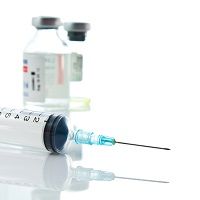HPV Vaccine Successfully Cuts Infection Rates by Two-Thirds in Teenage Girls
The prevalence of the cancer-causing human papillomavirus vaccine (HPV) in US adolescent girls has steadily been dropping following the initial recommendation for the HPV vaccine in 2006.

The prevalence of the cancer-causing human papillomavirus (HPV) in US adolescent girls has steadily been dropping following the initial recommendation for the HPV vaccine in 2006.
The HPV vaccine immunizes against HPV types 6, 11, 16, and 18 — the strains considered most likely to trigger cancer cases.
To analyze the drop, researchers at the Centers for Disease Control and Prevention (CDC) compared rates of HPV infection in 2,587 women 14 to 34 years of age during the years prior to the introduction of the vaccine between 2003 and 2006, with 2,061 women from 2009 to 2012.
Results published in the journal Pediatrics showed that the percentage of females who reported receiving at least one dose of HPV vaccine after its introduction ranged from 3.3% of those between the ages of 30-34 years to 51% of those age 14-19 years.
Researchers discovered that HPV infection rates for the teen girls were 64% lower from 2009 to 2012 than they were before the vaccine’s introduction.
Those patients between 20-24 years of age saw a 34% drop as well.
Lauri E. Markowitz, MD, medical epidemiologist at the CDC and lead author of the study, remarked, “These results are very encouraging and show the effectiveness of the vaccine. Eventually we expect to see decreases in HPV in older groups as women who were young (enough to get the vaccine).”
“This finding extends previous observations of population impact in the US and demonstrates the first national evidence of impact among females in their 20s,” concluded Markowitz.